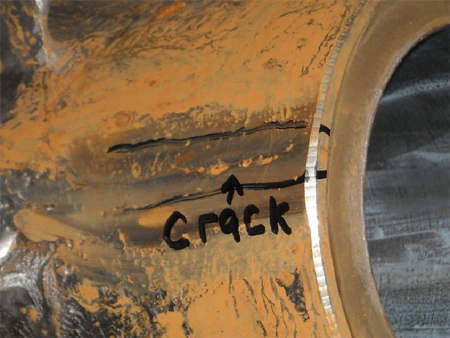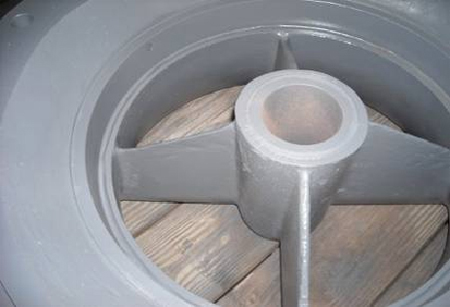When a critical raw water intake vertical turbine pump at a local water treatment plant failed, there was no time to waste. However, before our repair shop pulled the pump, my repair manager Jerry wanted to find out as much about its history as possible. Speaking with operators, we learned that the pump experienced vibrations since its last repair, and these vibrations were gradually increasing with time.
The plant contracted divers to examine the sump near the pump bell area, and they discovered that the lower bushing was almost gone. Since the pump intake comes from the river, it was assumed that sand, which is normally present in such applications, entered a lower bushing, wore it out and caused eventual failure.
Therefore, the plant attributed the failure to the "nature of the beast," and wanted to have the bushing replaced, with little interest in the analysis.
When the pump arrived at the shop, it quickly became obvious that there was more damage to the internals than simply a failure of the lower bushing worn away by sand. Both stage bushings were also worn and damaged badly, as a result of the shaft oscillating after the failure of the lower bushing. At first, it was attributed to impellers contacting the casing rings, as evident by the severe damage to both impeller ring and bowl wear rings. Fortunately, there was little damage to both impellers and bowls. The shaft, however, was severely bent, running out almost 1/8-in, and needed to be either straightened or replaced.
The perception of the root cause of failure started to change after a close examination of the suction bell housing revealed a crack (see Figure 2).

Figure 2. Ultimate root of failure: a crack at the bell housing from a thinned wall during the previous repair assembly
Measuring the thickness of the housing wall that held the lower bushing clearly revealed what had happened. After the past repair, the wall was machined out to accept a new bushing. The new bushing was made with a larger OD to "chase" the reduced ID of the bore to which it was seated. That made the bushing wall much thicker, while the housing wall got unacceptably thin (like a side of a tooth after each cavity repair by the dentist). When over-pressed to the housing, the bushing cracked at assembly, and the pump was doomed.
To correct the problem, the suction bell hosing had to be restored to its original wall thickness (see Figure 3). A new bronze bushing was machined with the correct wall thickness, as well as a correct press fit.

Figure 3. Bell housing wall repaired, and a new bushing with proper wall thickness and correct dimensions installed
When the repaired pump was delivered to the customer and installed, vibration readings were taken again and showed low values. A spectral analysis indicated no significant peaks across a wide range of frequencies. The pump is now being monitored on a regular basis, with vibration trends plotted and reviewed by our technicians and the plant operating personnel. All of its sister pumps are being monitored, with trends plotted on SCOPETM (Specific Comprehensive Operation of Pumping Equipment).
Had the root cause not been identified, more pumps could have failed catastrophically and unpredictably. Understanding the root cause is important to learn lessons and prevent similar issues from happening in the future.
Pumps & Systems, April 2009


